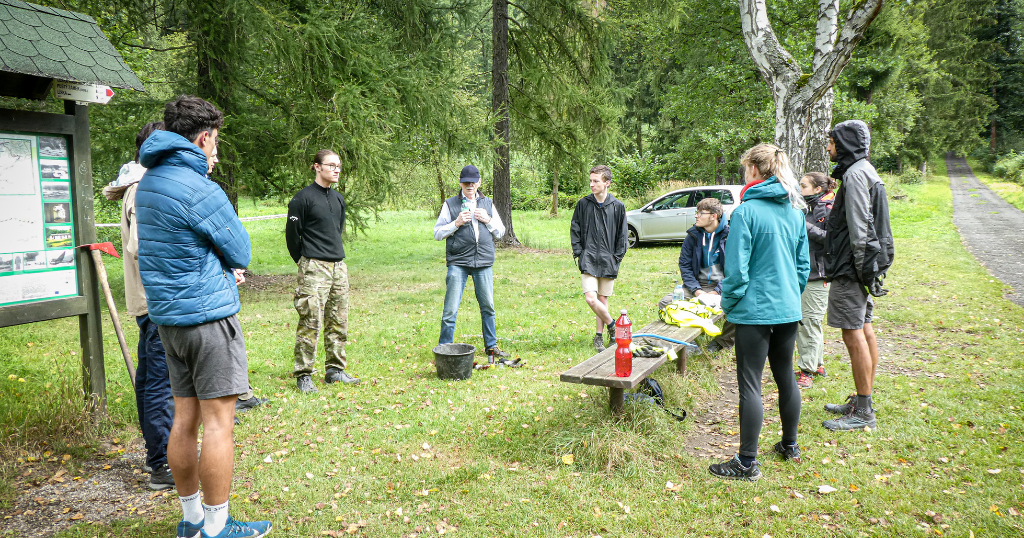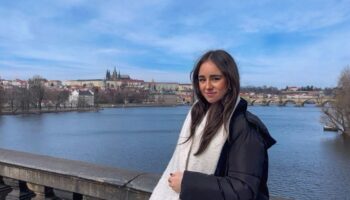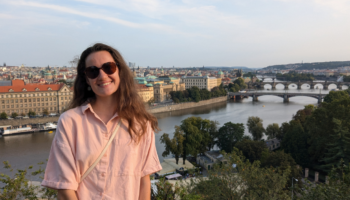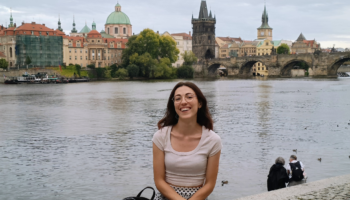Why did you choose this workcamp? What were your expectations?
I was interested in the common history of the Czech Republic and Germany, especially in the impact of the nationalsocialist regime and of its cruelties before and during World War II. Further, I was hoping to experience the importance of a vivid memory culture, also looking at the arising idea of nationalism and right extremism in every part of Europe.
The workcamp took place in the village of Rabštejn, a part of a small town Česká Kamenice (close to Děčín), only around 20 km away from the German boarder. The initial thought of the project was to maintain the monument area at Rabštejn, dedicated to the victims who died and have been murdered there at the concentration camp during WWII. At the same time, the project aimed to bring this history closer to volunteers. This idea seemed very meaningful to me and I was full of excitement to go there.
Did the workcamp meet your expectations? What impact had the workcamp on you and the volunteers?
If you have already participated at a workcamp, you will probably also be familiar with the feeling, that it exceeded your expectations. This also applies to this particular project. We were ten in total, from Germany, Spain, France, Italy and the Czech Republic, and I can say that the following applies to every single one of us:
Not only did we learn a lot about Czech-German history before, during and especially after WWII, it even became alive for us, through the people we talked to and places we visited during our time there. On our journey, we learned a lot from one of our project supervisors and project initiator Prof. Dr. Helmut Schmidt, whose grandfather used to be the mayor of Česká Kamenice until WWII, and thus is very connected to this place. He taught us about the happenings after WWII not only in Česká Kamenice, but in the whole former Czechoslovakia, resp. the Sudetenland.
During a ceremony, we were able to even talk to witnesses, a few of the former Sudeten Germans in Czechoslovakia, who survived the relocation to Germany or into forced labour camps, which ended deadly for almost 20.000 people. Back then in 1945, many former concentration camp areas, such as Rabštejn, were used as labour camps for Sudeten Germans.
Through Mr. Schmidt and the witnesses telling us about their experiences, the whole history became vivid to us and we could truely understand the purpose of our work. Even though it was only a short time we were working at the monument sight, we received a lot of appreciation. To be honest, I am already excited for the participants of the following workcamp there next year, since they will have the chance to start realising our ideas of a new monument to be set up there. A monument dedicated to the victims after the WWII, a reminder that “injustice cannot be battled with injustice“ (a quote from Mr. Schmidt’s speach at the ceremony).
Why would you recommend going to a workcamp with such a focus?
In short: because to my opinion it can connect you closer to people. It can give you a whole other level of understanding history and why it is essential for nowadays ways of living together, that we have an active memory culture.
I would definitely recommend to also have a look at the other INEX workcamps with a focus on Czech-German exchange. There is even a new workcamp like this planned in October, „Společné Kořeny – Gemeinsame Wurzeln“ (common roots) in Tišnov, close to Brno, which I am also happy to lead. Besides ecological aspects, like learning about fruit mapping and planting trees, we are also rediscovering Czech-German history through creating an interactive presentation about a former Sudeten German among other things. I really hope that some of you will find their way to such a workcamp and can have a similar experience as we had at Rabštejn.






